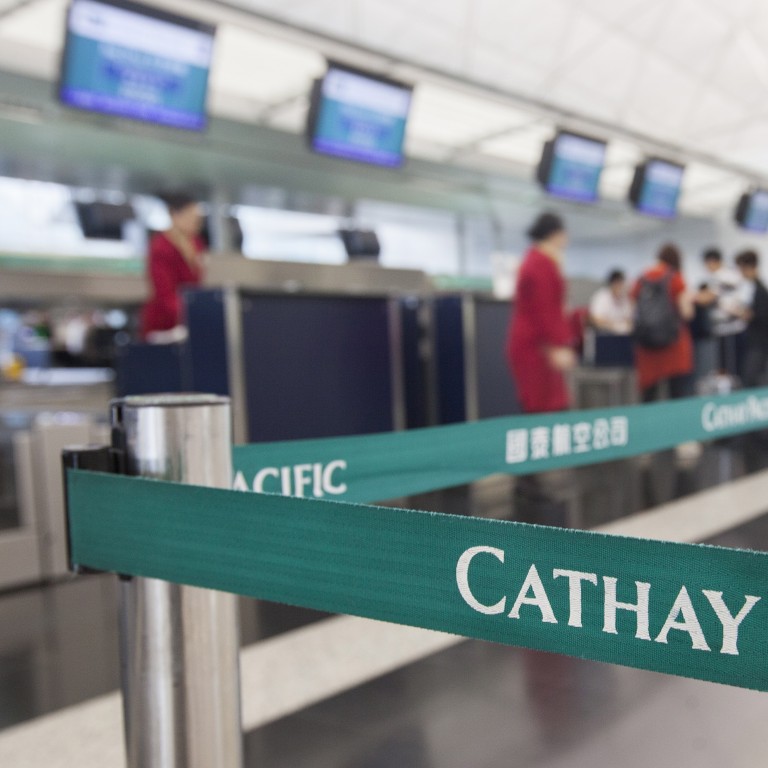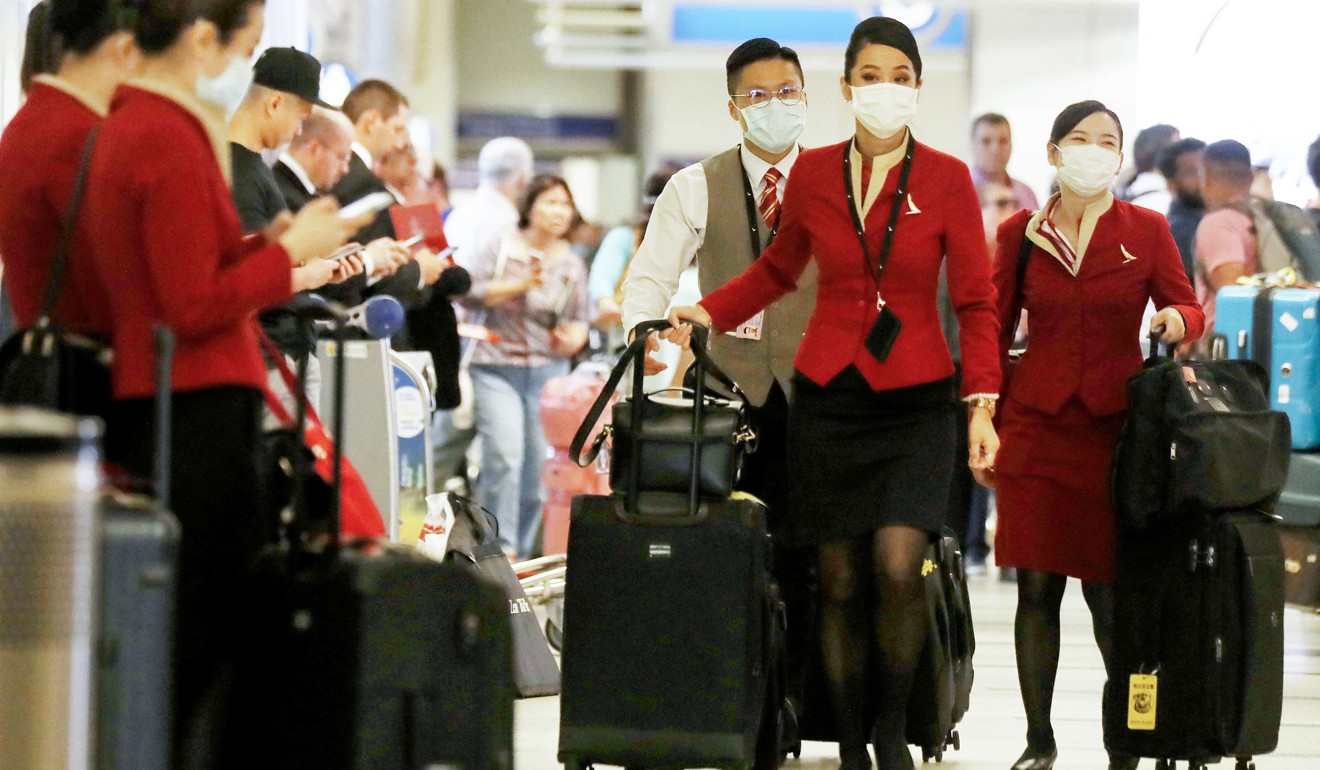
Hong Kong’s Cathay Pacific records HK$2 billion loss in February as pandemic limits travel
- Breakdown of operations for last month shows Hong Kong airline flying planes half-empty on average
- Management warns of skeleton flight schedule for April, although cargo business remains strong
Cathay Pacific recorded an unaudited loss of HK$2 billion (US$257 million) in February due to the global slowdown in travel and curbs on flying caused by the Covid-19 pandemic, Hong Kong’s flagship airline said on Monday, warning of 90 per cent cut to its flight schedules in April and May.
The loss came from Cathay Pacific and Cathay Dragon, which suggests the actual blow to the company could be more severe once the business downturn of its budget carrier HK Express is factored in. In normal times, the company’s associate and subsidiaries account for most of the group’s profits in contrast to the airline business as a stand-alone operation.
The Cathay group has been carrying about 20,000 passengers a day so far this month, down roughly 80 per cent from its usual number, with as many as 150 planes sitting idle on the tarmac.
The airline last week said it would reduce flight capacity by 65 per cent for March, but since then, more sweeping travel restrictions have come into force around the world, including Hong Kong ordering mandatory self-quarantine for most arrivals from Europe. “The situation has further deteriorated since February,” Lam said.
The airline said it was “planning to only operate a bare skeleton passenger flight schedule” for April, equivalent to a 90 per cent reduction. The cuts would be maintained into May if travel restrictions did not ease, it said.
US starts clinical trial of Covid-19 vaccine that will last into next year
“The scale of the challenge we are currently facing is unprecedented and no one can predict when conditions will improve. Our advance passenger bookings show no clear signs of recovery at this stage, and the gap in bookings compared to 2019 continues to widen.”
But the airline’s cargo business, which is roughly evenly carried on passenger flights and cargo-only planes, continued to be a bright spot.
Demand remained high and with factories reopening on mainland China as authorities reported the outbreak had been brought under control, the airline said it would add additional cargo flights and cargo-only passenger flights to its schedule.
Detailing its operations for February, the airline said it carried 1 million passengers, down by two-thirds from a year earlier, while planes were 53 per cent full on average, down 28.6 percentage points. Cargo levels slid 9.6 per cent to 118,711 tonnes (130,856 short tons).
Cathay Pacific also said on Monday it struck a deal with aircraft lessor BOC Aviation to sell and lease back six Boeing 777-300ER planes in a deal worth US$703.8 million to shore up its battered balance sheet. Last week the airline said it had access to HK$20 billion of unrestricted liquidity.
As the damage from widening global travel restrictions and the collapse in demand for flights pushes many airlines to the brink of collapse, a slew of European airlines on Monday detailed the pain they were suffering.

British Airways’ parent IAG said it would cut capacity in April and May by 75 per cent; Air France-KLM indicated reductions of 90 per cent; and Virgin Atlantic said it would cut long-haul service by 85 per cent and asked staff to take eight weeks of unpaid leave.
Lufthansa Group said it would cut long-distance service by 90 per cent as its subsidiary Austrian Airlines would shut down for at least 10 days in response to the collapse in demand.
Low-cost powerhouse Ryanair signalled it might ground its entire fleet of about 470 planes, similar to easyJet and Scandinavian Airlines, which suspended most operations and laid off 90 per cent of staff temporarily. Norwegian also opted for similar measures, while Finnair warned of heavy losses as it cut capacity by 90 per cent.

